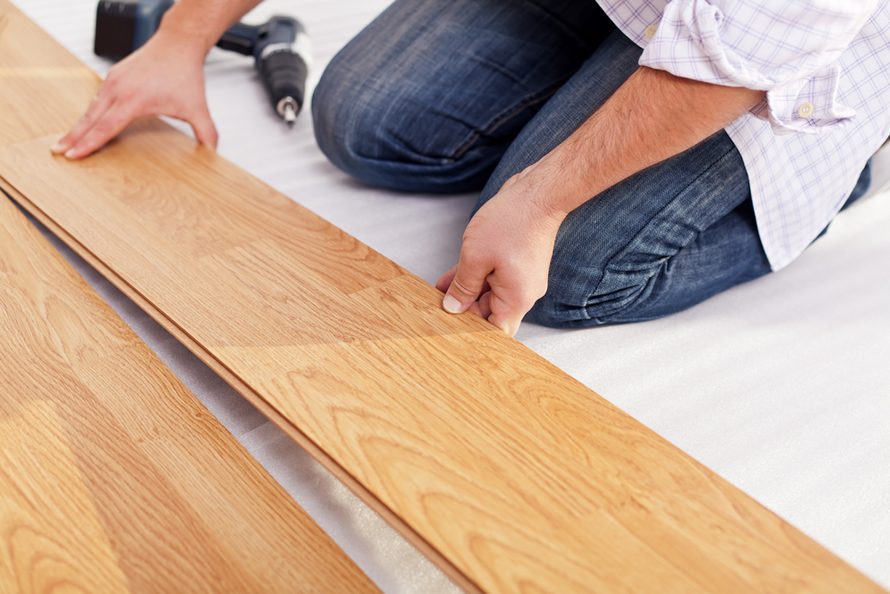
Before installing a wood floor on to a concrete sub-floor, the first thing you want to determine is whether or not you should use plywood.
First you have to establish whether you can even use it at all. Height allowance is the first determining factor in whether or not you can use plywood on a concrete sub-floor. This has to do mostly with transition to tile, transition to doors or transition to your exit doors; do they allow you to have a build up of up to 3cm?
You can use thinner plywood to achieve lower transition heights, however you always want the plywood to be as thick or thicker than the finished floor. So if you have a 15mm high floor you will need at least 15mm high plywood.
So if conditions in your room allow you to use plywood, the reason to choose it is that you can feel and hear the difference between a floor installed on plywood, versus directly onto concrete.
The most common installation method is to lay felt paper over your concrete sub-floor, then install your plywood to the concrete using a (nail?)gun.
There might be instances when you will not want or be able to nail plywood to the concrete sub-floor. In such cases you can use full spread mastic to stick the plywood to your subfloor.
If you choose not to use plywood during the installation of your flooring and you plan to lay your flooring directly on the sub-floor there are few critical things you need to pay attention to.
Understanding the moisture content of your concrete sub-floor is critical, regardless of the installation method. You need to make sure you measure moisture levels throughout the whole site. In concrete a moisture level of no more than 3-4% is required.
The next thing which is important to take in to consideration is, especially if you are installing directly onto concrete, is how level your sub-floor is. A level sub-floor is critical to a successful and easy installation process.
Once you have determined the moisture content of the concrete and achieved a level sub-floor surface, it is important to decide whether or not you are going to use some sort of moisture barrier. Full spread mastic offers some sort of vapour protection but having a separate moisture barrier is an additional form of insurance. And it is not a replacement for properly sured slab.
Remember – you cannot put moisture barrier over a wet concrete floor and expect your floor to perform.
Beginning an installation over concrete you will have to take time to be sure that the first row is well seated-in to the glue. And the best way to do that is to make sure that you use some sort of evenly spread, heavy weight (a bucket full of water/bag of sand on a floorboard, for example).
Make sure that this floorboard is free of debris, and that there is no way that it can mark your floor.
Allow starter boards to adequately set up before continuing and lay multiple starters throughout the site to make the installation process more efficient.
For advice about the best wood flooring for your home feel free to contact the ESB sales team. Contact us now to request your no hassle no obligation free samples or come down to our North London showroom for a closer look.
| Mon-Fri | 8:00AM – 5:00PM |
| Saturday | 10:00AM – 4:00PM |
| Sunday | 11:00AM – 3:00PM |





.svg)
.svg)